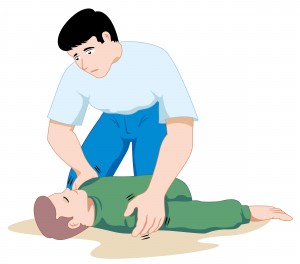 As we have mentioned throughout our Christmas themed blogs this December, the risk of experiencing seizures is heightened during the festive period. Thanks to an abundance of food, late nights, alcohol, stress, and Christmas lights there are a number of potential triggers. It is therefore essential that we know what to do in the event of a seizure.
As we have mentioned throughout our Christmas themed blogs this December, the risk of experiencing seizures is heightened during the festive period. Thanks to an abundance of food, late nights, alcohol, stress, and Christmas lights there are a number of potential triggers. It is therefore essential that we know what to do in the event of a seizure.
Whether you are a friend, family member of someone who has epilepsy or simply a stranger in the street we suggest that you take a look below for a handy guide on seizure first aid. In doing so, you could truly aid someone and ensure that the experience is as unfrightening as possible. Read on for more information:
Recognising A Seizure
You may think that a seizure simply constitutes convulsions and a dramatic fall, but this is not the case. In fact a seizure can vary from losing muscle control, unconsciousness, or a change in behaviour. Quite simply not all seizures involve spasms, convulsions, or loss of consciousness.
Tonic-Clonic Seizures
During a tonic-clonic seizure, the individual is likely to experience stiffening of the body, loss of consciousness causing a fall, followed by jerking movements. You may notice a blue tinge around their mouth which is due to the onset of irregular breathing. The individual experiencing a seizure may also lose bladder and bowel control.
Said movements should stop and consciousness regained after a few minutes.
Focal (partial) Seizures
The most common type of seizure, an individual will likely become unware of their surroundings. In turn they will experience abnormal muscle contractions such as uncontrollable movements like bobbing of the head or smacking their lips. Some individuals will experience hallucinations where they see, smell, or even hear things that are not there.
Absence Seizures
An absence seizure is usually characteristic of a vacant stare, often mistaken for a lapse in attention. Signs of an absence seizure can include a sudden stop in motion without falling, lip smacking, eyelid flutters, chewing motions, or small movements of both hands.
Seizure First Aid
The most important thing you can do is to not panic and remember that it is not always necessary to call an ambulance. There are however a number of recommendations which you can carry out to ensure you avoid any additional damage. The National Institute of Neurological Disorders and Stroke recommend a number of the following:
- If necessary move the individual away from danger. Do not move them unless essential.
- Once the seizures has come to a stop, roll the individual into the recovery position to aid breathing and avoid choking.
- Cushion their head.
- Loosen tight clothing that may be around their neck. This includes clothing such as ties and collars.
- Never put anything in their mouths. Even in an attempt to clear airways avoid putting your fingers in the individuals mouth. Instead grip their jaw gently and tilt their head back slightly.
- Do not restrain the person experiencing a seizure unless cushioning a fall as this could result in further bodily harm.
- Time the seizure. This can be useful when the individual comes round or if medical personnel are called. Question how long the seizure lasts and what their symptoms were.
- Stay by their side. Comfort and reassure the individual once the seizure has come to an end.
When To Call For Medical Attention
It is not always necessary that an ambulance or medical personnel is needed. However, there are a few considerations to think about which may warrant medical attention.
- The seizure lasted longer than five minutes
- It was their first seizure
- The individual doesn?t regain consciousness or has a series of seizures without regaining consciousness.
- They have a high fever
- An injury has occurred as a result of a seizure
- The individual is pregnant or diabetic
Lend a H.A.N.D
There is plenty to remember when assisting someone who is experiencing a seizure. Therefore we have compiled a handy acronym to help you on your way. As long as you remember to Lend a H.A.N.D we?re sure you?ll know exactly what to do:
Help ? Stop and Help
Analyse ? Analyse the situation (what type of seizure? Are they in danger? Are they hurt?)
Need ? What do you need to do/what do they need? (Move away from danger, put them in the recovery position, call an ambulance if it lasts longer than 5 minutes etc.)
Discuss ? Most people will come around with no recollection, so discuss what has happened and make sure they don?t need any more help.
More Help and Information
For more help and information regarding seizure first aid, recognising symptoms, and how assistive Epilepsy technology can help you, give us a call on 0845 217 9952 or 01530 231215
For a helping hand this Christmas don?t forget to take a look at our useful Christmas Guide to coping with epilepsy.

